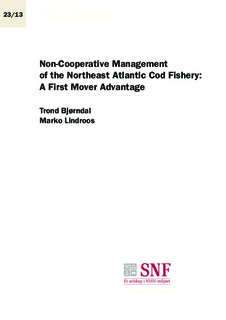| dc.description.abstract | The point of departure for this analysis is Bjørndal and Lindroos (2012), who developed an empirical bioeconomic model to analyse cooperative and non-cooperative management of Northeast Atlantic cod. In their analysis, only constant strategies were analysed for non-cooperative games. In this paper, non-constant strategies are considered. Moreover, the fishery in question is characterised by cooperative management. What may happen in the real world, is that one nation breaks the cooperative agreement by fishing in excess of its quota. Often, it takes time for the other agent to detect this and respond. In this paper, we allow this kind of delayed response into a two agent non-cooperative game so that, if country 2 exceeds its quota, there will be a time lag before this is detected by country 1; moreover, there may also be a delay until country 1 is able to respond. Results show that the outcome critically depends on the length of these two lags as well as initial conditions. | no_NO |
